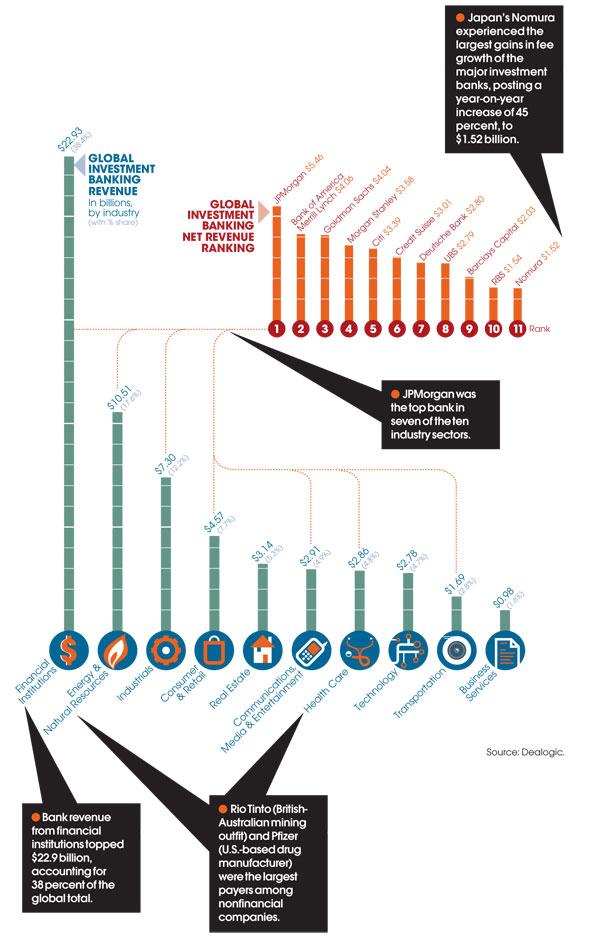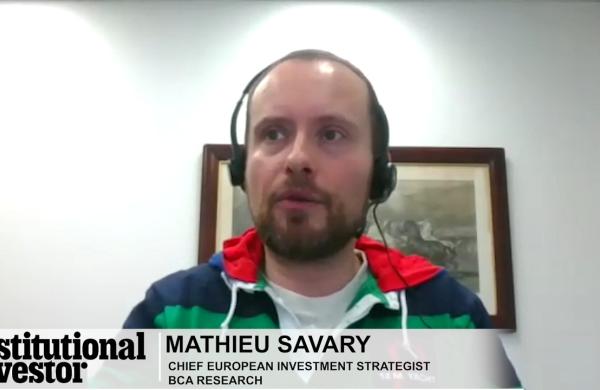Investment bank revenues (read: fees) actually rose last year.
That’s not surprising, really. Investment banks often do well when markets are distressed, and deals abound for those with money.
The fee frenzy in some sectors, however, is remarkable.
The real estate sector saw its highest year-on-year increase in fee generation — 46 percent, to roughly $3 billion. Revenues generated by financial institutions (commercial banks, credit unions, insurance companies and the like) hit $22.9 billion, an increase of 1 percent from 2008. Federal home loan banks were the largest payer of fees.
(Background: the Federal Home Loan Bank System, more than 8,000 community banks, is a prime source of low-cost funding in the U.S.) Merger and acquisition fee revenue, reflecting a falloff in global deals, declined 41 percent last year, to $12.9 billion from $21.9 billion in 2008. The Asia-Pacific’s share of global revenue increased, to 20 percent from 13 percent. JPMorgan was the top-earning bank by far, with $5.46 billion in global net revenue, followed by Bank of America Merrill Lynch ($4.06 billion) and Goldman Sachs ($4.04 billion).
All of which goes to the common wisdom that banks, not unlike savvy politicians, never let a crisis go to waste.







